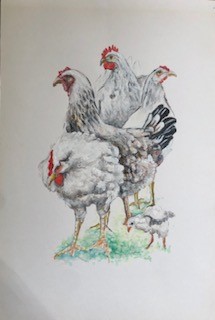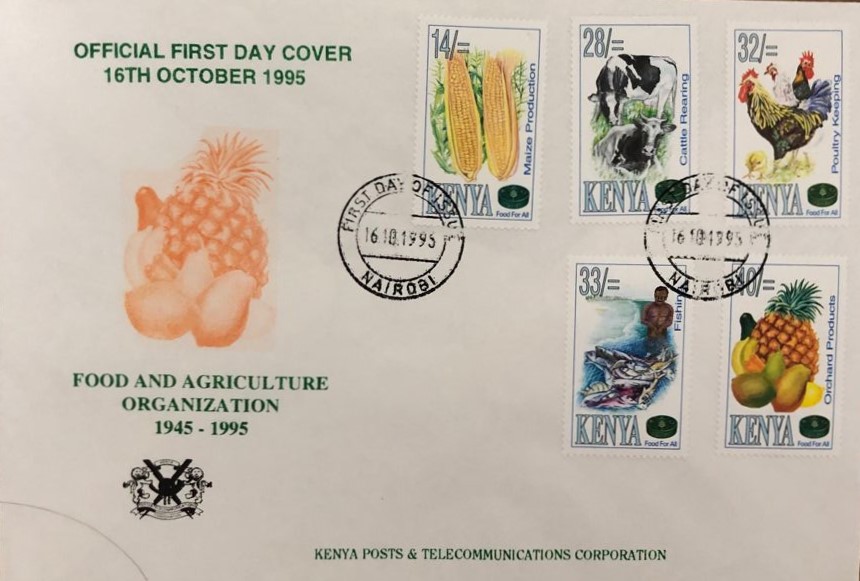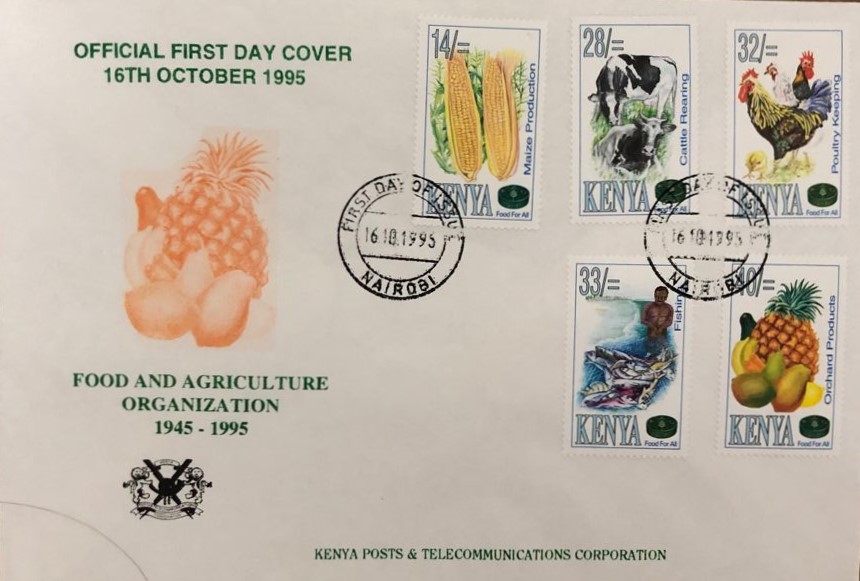
In commemorating the 50th Anniversary and recognition of the Food and Agriculture Organization’s invaluable contribution to Kenya’s food production and farming development, the Kenya Posts & Telecommunications Corporation has issued this set of five stamps.
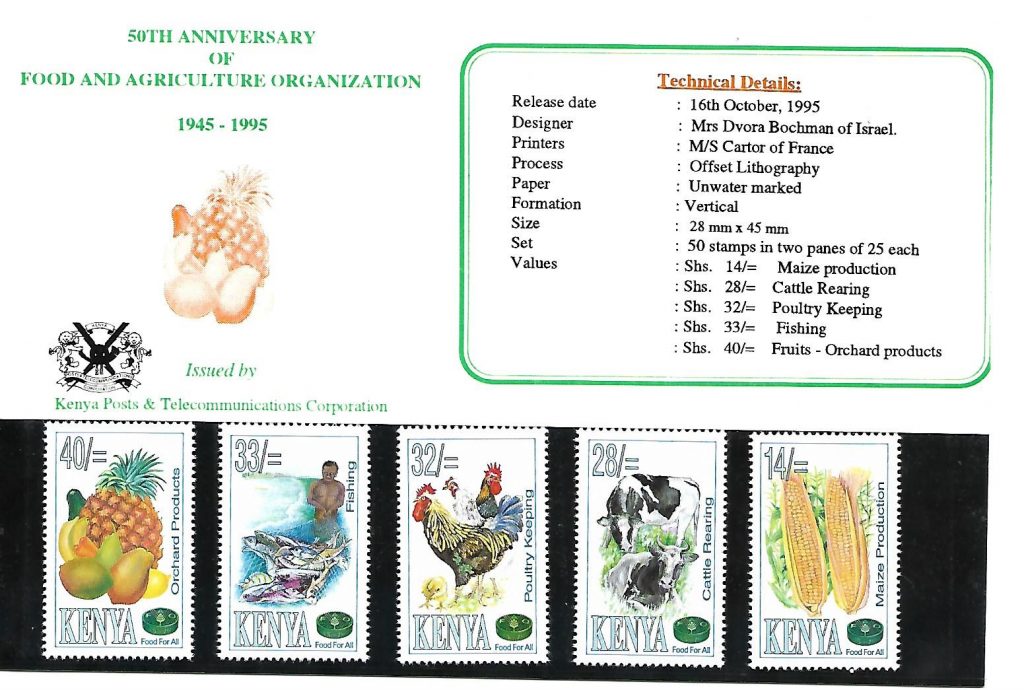
TECHNICAL DETAILS
Release Date: 16th October 1995
Designer: Mrs. Dvora Bochman of Israel.
Printers: M/S Cartor of France
Process: Offset Lithography
Paper: Unwatermarked
Formation: Vertical
Size: 28 mm x 45 mm
Set: 50 Stamps in two panes of 25 each
Values
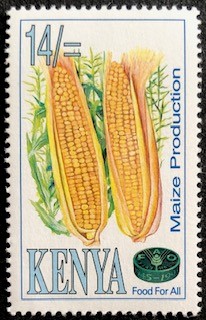
14/= : Maize production
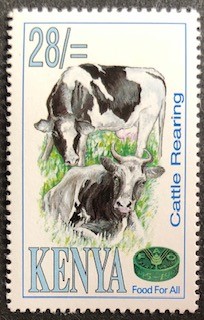
28/= : Cattle Rearing
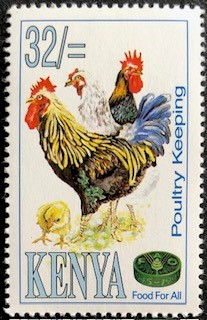
32/= : Poultry Keeping
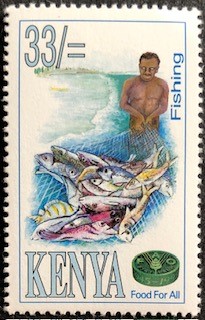
33/= : Fishing
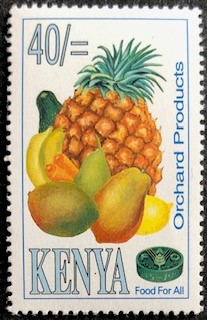
40/= : Fruits – Orchard products
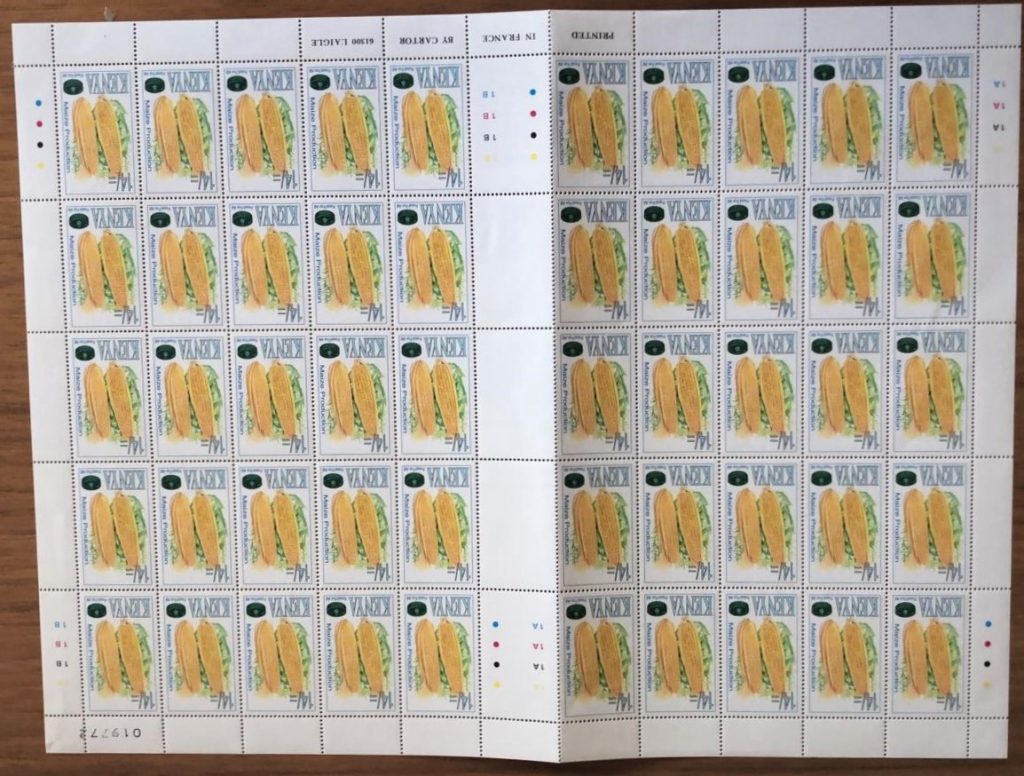
50th ANNIVERSARY OF FOOD & AGRICULTURE ORGANIZATION
The Food and Agriculture Organization of the United Nations turns 50 this year. This is an important occasion for celebration and reflection. When the representatives of 44 countries signed the organization into existence on 16th October 1945, they endorsed an ambitious vision. The FAO would work to raise levels of nutrition and standards of living. The new agency would improve the efficiency of food production and distribution and better the condition of rural populations. This would contribute towards the expanding world economy and ensure “humanity’s freedom from hunger,” according to the preamble of the FAO constitution.
After half a century of activity, FAO has 171 members. The organization had a US $ 673 million biennial budget in 1994 -95. It had approximately 6000 professional staff to execute a program that touches every aspect of food production and security.
There have been improvements in nutrition and food production in specific regions over the past 50 years, but population growth and other problems continue to frustrate across the-planet-progress. According to current estimates, by the year 2030 world population will rise from the present 5.5 billion to 9 billion. Although the world can produce enough food for everyone, in developing countries, 800 million people are chronically undernourished. Among them, 192 million children under five suffer from acute or chronic protein and energy deficiencies. The most chronically undernourished live in countries that do not grow enough food to feed their populations and cannot readily afford to fill the gap with imported food.
At present, 88 Nations fall into the category of low-income food-deficit countries. Of these, Forty-four are in Africa; seventeen are in Asia; six are in Oceania; nine are in Latin America and the Caribbean; and also twelve are in Europe/Commonwealth & Independent States (CIS). At the same time, bilateral and multilateral assistance to developing countries’ agriculture declined. Between 1980 and 1990, overall amounts dropped from US-$ 12 billion to 10 billion. Agriculture’s share of total development assistance fell from 20% to 14% during this period.
Yet, access to adequate food is accepted as a human right and collective responsibility. The universal declaration of Human Rights (1948) recognizes that “everyone has a right to a standard of living adequate for the health and well-being of himself and his family, including food”
Food and Agriculture Organization Objectives

FAO looks beyond promoting food production to examining conditions for a stable food supply and ensuring all people have physical and economic access to basic food requirements. Its multisectoral activities in Agriculture, Fisheries, and forestry reflect an awareness of environmental issues and aim to achieve integrated sustainable development whereby human needs are met without compromising those of future generations. FAO functions by collecting, analyzing, and disseminating information on livestock, fisheries, forestry, and agricultural policy and lending technical assistance in all these areas.
The Organization places nutrition at the forefront of development issues. In 1992, it further demonstrated its commitment to food security through two important initiatives. The first, in March, “The Declaration of Barcelona,” called for a declaration on the food rights of mankind and sought to mobilize support from international organizations, government authorities, non-governmental organizations, and each and every individual. Next, in December, the FAO joined with the World Health Organization (WHO) to convene the International Conference on Nutrition (ICN). This was the first global summit to address the problems of hunger, malnutrition, and diet-related disease worldwide. ICN considered nutrition from various broad standpoints: as an area of biological science; a feature of government policy; an issue of public health; a function of food production and distribution, and above all, as a subject of urgent attention in both the developed and developing world.
Food and Agriculture Organization 50th Anniversary
The Food and Agriculture Organization fervently believes that its 50th anniversary should be the occasion to raise public awareness and to promote political commitment at the highest level for a global campaign to eradicate hunger and under nourishing and provide food security for all. On 16th October 1995, a commemoration will be held in Quebec City, Canada, where the instrument creating FAO was signed. Celebrations are also planned in the Organization’s member countries. The day coincides with FAO’s 15th World Food Day, whose theme for 1995 is ”Food for all”. The Food and Agriculture Organizing enters its second half-century of operation committed to helping people of goodwill to assist it in this noble task.

